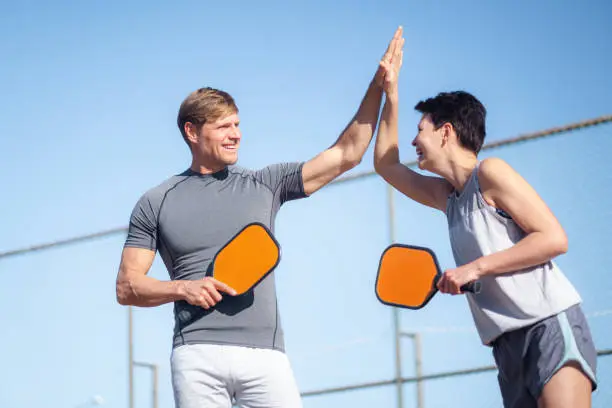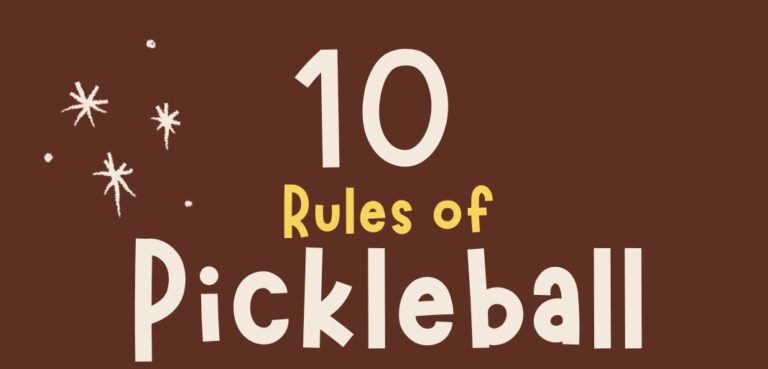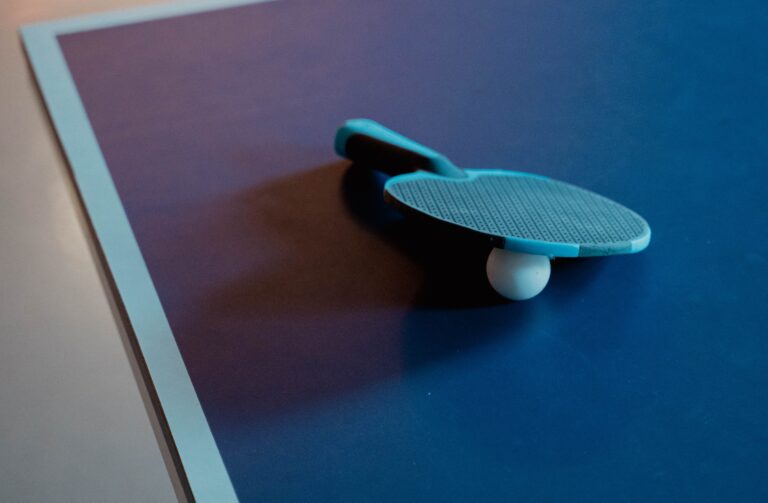Common Pickleball Mistakes and How to Fix Them: A Deep Dive into Elevating Your Game
Pickleball’s taken the world by storm, hasn’t it? It’s that quirky mix of tennis, badminton, and ping-pong that’s got everyone from your neighbor’s kid to your grandma swinging paddles. But here’s the thing: as fun as it is, pickleball can trip you up if you’re not careful. Whether you’re just stepping onto the court or you’ve been at it for a while, mistakes happen. And trust me, I’ve seen them all—both in my own game and in the players I’ve studied as a market research junkie obsessed with this sport. Today, we’re diving into the most common pickleball blunders and, more importantly, how to fix them. I’m here to break it down for you in a way that’s real, relatable, and ready to level up your game. Let’s get into it!
Swinging Too Hard: Less Power, More Finesse
Ever watch a beginner smash the ball like they’re auditioning for a home run derby? Guilty as charged—I used to do it too. One of the biggest slip-ups newbies (and even some intermediates) make is swinging with way too much gusto. Pickleball isn’t about brute force; it’s more like a chess match with paddles. When you overswing, the ball either sails out of bounds or lands in the net—neither of which is a good look.
You May Also Like: Top 9 best pickleball paddles for women
How to Fix It: Dial it back, my friend. Focus on control over power. Imagine you’re gently tossing a frisbee to a buddy instead of launching a rocket. Keep your swing short and snappy, especially near the kitchen (that non-volley zone by the net). Practice soft shots—like dinks—that barely clear the net but stay in play. It’s all about finesse, and once you get the hang of it, you’ll feel like a wizard out there.
Standing Like a Statue: Get Those Feet Moving
Picture this: the ball’s coming your way, and you’re rooted to the spot like a tree in a storm. Sound familiar? A ton of players freeze up instead of moving their feet, and it’s a recipe for disaster. If you’re not in position, you’re either lunging awkwardly or missing the shot entirely. I’ve seen it time and again—folks think pickleball’s all about arm action, but your legs are the real MVPs.
How to Fix It: Stay light on your toes, like you’re dancing to your favorite tune. Bend your knees a little, keep your weight forward, and shuffle side to side as the ball moves. Pretend you’re a goalie guarding the net—always ready to shift. Drills help here: try side-stepping across the court or practicing quick pivots. Before you know it, you’ll be gliding around like a pro.
Ignoring the Kitchen: Respect the No-Fly Zone
The kitchen—that seven-foot zone by the net—trips up so many players. Ever catch yourself stepping in there to smash a volley, only to get called out? Yep, that’s a classic rookie move. The non-volley zone exists for a reason: it keeps the game strategic and prevents you from turning it into a slam-fest. Ignoring it—or not understanding it—can cost you points faster than you can say “pickle.”
How to Fix It: Learn the rules like they’re your new best friend. You can’t volley (hit the ball out of the air) while standing in the kitchen, so stay back unless the ball bounces first. Practice hovering just behind the line, ready to pounce after a bounce. Think of it like a game of red light, green light—know when to stop and when to go. Master this, and you’ll own the court.
Hitting Everything Hard: Where’s the Soft Touch?
Here’s a confession: I used to think every shot needed to be a screamer. Boy, was I wrong. A lot of players fall into the trap of blasting every ball, forgetting that pickleball rewards variety. Soft shots—like dinks and drops—can be your secret weapon, but if you’re always swinging for the fences, you’re missing out.
How to Fix It: Mix it up! Picture your paddle as a paintbrush, not a sledgehammer. Work on delicate shots that just kiss the net and land softly in the kitchen. Start with a drill: stand at the baseline and aim to drop the ball into the opponent’s kitchen five times in a row. It’s tricky at first, but once you nail it, you’ll keep your rivals guessing.
You May Also Like: 8 Best Pickleball Gloves for Men and Women
Poor Paddle Grip: Holding It Like a Lifeline
Ever feel like your paddle’s slipping or your shots are going wild? Might be your grip. Tons of players clutch their paddle too tight—like it’s a lifeline in a storm—or hold it at a weird angle. It’s a sneaky mistake that throws off your accuracy and tires out your arm quicker than you’d think.
How to Fix It: Relax, buddy! Hold the paddle like you’re shaking hands—firm but chill. Your grip pressure should be about a 4 out of 10; tight enough to control, loose enough to stay comfy. Check your angle too—keep the paddle face slightly open for better control. Practice this in front of a mirror, and you’ll feel the difference fast.
Bad Positioning: Are You a Backyard Brawler?
I’ve seen players hovering way too far back or crowding the net like it’s a party. Positioning’s a biggie in pickleball, and getting it wrong leaves you scrambling—or worse, watching the ball whiz by. If you’re stuck at the baseline all game, you’re giving your opponent free rein at the net. Too close? You’re a sitting duck for lobs.
How to Fix It: Find the sweet spot. After your serve or return, hustle to the kitchen line (just behind it, mind you). It’s like claiming prime real estate—close enough to attack, far enough to defend. Practice transitioning from baseline to net in a few quick steps. It’s all about balance, and once you’ve got it, you’ll feel unstoppable.
Serving Like a Tennis Pro: This Ain’t Wimbledon
Coming from tennis? You might be serving with a big, loopy motion that’s overkill for pickleball. The serve here is underhand, simple, and meant to start the rally—not end it. A lot of newbies muscle it too hard or aim too high, sending the ball out or making it an easy target.
How to Fix It: Keep it low and smooth, like you’re rolling a bowling ball. Drop the ball gently and tap it underhand, aiming for the back of the opponent’s court. Think precision, not power. Practice serving into a box near the baseline until it’s second nature. You’ll rack up points without breaking a sweat.
Not Communicating: Silent Partners Sink Ships
Playing doubles? If you and your partner aren’t chatting, you’re in trouble. I’ve watched pairs crash into each other or let balls drop because nobody called it. Lack of communication turns a team game into chaos, and it’s a mistake that’s so easy to fix.
How to Fix It: Talk it out! Yell “mine” or “yours” loud and clear. Before the game, agree on who takes middle shots or lobs. It’s like being in a band—everyone needs to know their part. Practice calling shots during warm-ups, and you’ll sync up like peanut butter and jelly.
Overthinking Shots: Keep It Simple, Champ
Ever freeze mid-rally, wondering if you should smash, dink, or lob? Overthinking’s a silent killer in pickleball. You second-guess yourself, hesitate, and bam—the ball’s past you. It’s a trap I fell into early on, and it’s more common than you’d think.
How to Fix It: Trust your gut. Pick a shot and commit, even if it’s not perfect. Start with simple plays—like returning to the middle—and build from there. Think of it like cooking: master the basics before you get fancy. With time, your instincts will sharpen, and you’ll flow like water.
Ignoring Footwork: It’s Not Just Arm Candy
Footwork’s the unsung hero of pickleball, yet so many players treat it like an afterthought. If your feet aren’t in sync with your swing, your shots go haywire. I’ve seen folks with killer paddle skills lose because they’re stumbling around like they’re on ice.
How to Fix It: Step up your game—literally. Practice small, quick steps to get into position before you swing. Imagine you’re dodging raindrops—light and nimble. Add a ladder drill to your routine: step in and out fast to boost agility. Your arms will thank you.
Rushing the Net: Patience Pays Off
Charging the net like a bull after every shot is tempting, right? But it’s a mistake if the timing’s off. Rushing leaves you exposed to lobs or caught out of position, especially if your opponent’s got a good eye.
How to Fix It: Wait for the right moment. Return the serve deep, then ease up to the kitchen line when you’ve got control. It’s like fishing—reel ‘em in slow and steady. Practice patience in rallies, and you’ll turn the tables in no time.
Forgetting Strategy: Play Smart, Not Hard
Pickleball’s not just whacking a ball—it’s a brain game. Too many players wing it without a plan, hitting randomly instead of targeting weaknesses. I’ve been there, swinging away with no rhyme or reason, and it’s a losing battle.
How to Fix It: Get tactical. Aim for your opponent’s backhand or feet. Use soft shots to draw them in, then lob over their head. Think of it like a puzzle—each move sets up the next. Watch better players and steal their tricks. Strategy’s your ace in the hole.
Skipping Warm-Ups: Cold Muscles, Hot Mess
Last one, I promise: skipping warm-ups. You’d be shocked how many folks hop on the court cold and end up stiff, sore, or just plain sloppy. It’s a sneaky mistake that sabotages your whole game.
How to Fix It: Take five minutes—seriously. Jog a little, stretch your arms and legs, swing your paddle a few times. Treat it like preheating an oven; you’ve gotta warm up to cook. Your body (and your score) will thank you.
Conclusion: Your Path to Pickleball Greatness
So, there you have it—common pickleball mistakes laid bare, with fixes that’ll have you playing smarter, not harder. This game’s a blast, but it’s even better when you’re not tripping over your own feet or sending balls into orbit. Whether it’s softening your swing, dancing around the court, or chatting with your partner, every tweak brings you closer to mastery. Pick one or two to work on next time you play—don’t overwhelm yourself—and watch how fast you improve. What’s your biggest pickleball pet peeve? Fix it, and let’s hit the court together sometime!
FAQs
- Why do I keep hitting the ball out of bounds?
You’re probably swinging too hard or not aiming low enough. Ease up and focus on keeping shots in play—control beats power every time. - How do I stop stepping into the kitchen by accident?
Practice staying just behind the line during rallies. It’s all about muscle memory—repetition’s your friend. - What’s the easiest way to improve my serve?
Keep it simple: low, underhand, and aimed deep. Practice hitting a target near the baseline until it feels natural. - Why do my partner and I keep messing up in doubles?
You’re not talking enough! Call your shots and agree on a game plan—communication’s the glue that holds a team together. - How can I tell if I’m overthinking on the court?
If you’re hesitating or missing easy shots, that’s a sign. Simplify your choices and trust your instincts—you’ll get smoother with practice.







